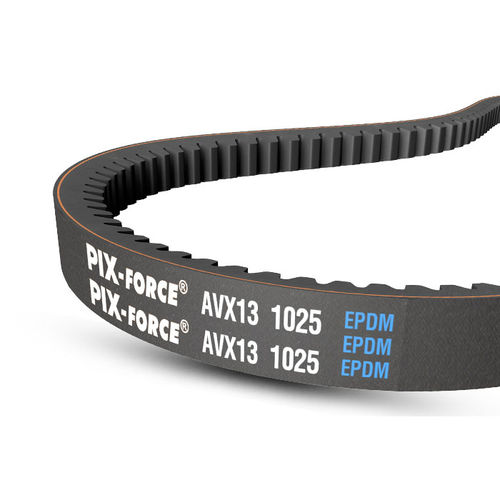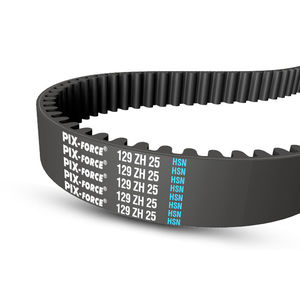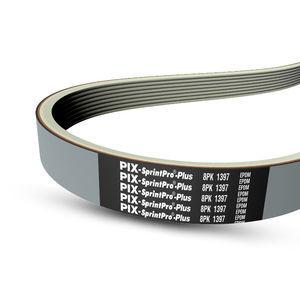
- Power Transmission - Mechanical components
- Mechanical Transmission
- Toothed belt
- PIX Transmissions Limited
- Company
- Products
- Catalogs
- News & Trends
- Exhibitions
Power transmission belt for the automotive industry PIX-FORCE®toothedEPDMengine



Add to favorites
Compare this product
Characteristics
- Type
- toothed
- Material
- EPDM
- Product applications
- engine, for vehicles
- Sector
- for the automotive industry
- Other characteristics
- oil-resistant, heat-resistant
- Length
Min.: 550 mm
(21.65 in)Max.: 5,000 mm
(196.85 in)- Width
Min.: 10 mm
(0.394 in)Max.: 23.8 mm
(0.937 in)- Thickness
Min.: 8 mm
(0.31 in)Max.: 13 mm
(0.51 in)- Temperature
Min.: -45 °C
(-49 °F)Max.: 120 °C
(248 °F)
Description
An alternator Belt drives the engine's alternator. Keeping the car's battery charged is the job of an alternator. Without the alternator Belt the battery would die after a short amount of driving. The spinning is made possible by the Alternator Belt that runs from the pulley on the alternator to the crank-shaft.
The type of the Belt around the alternator depends solely on the make of the vehicle. Older cars are fitted with a Cogged Belt for the alternator, while newer cars use Poly-V Belts as an alternator Belt.
Features
- Best suited for next-generation, high speed engines
- Cog profile offers enhanced flexibility and heat dissipation rate
- Higher power transmission capacity, best suited for smaller diameter pulleys
- Engineered and chemically treated modulus & low stretch tensile cords for higher loads, without stretch
- Compounded for better grip and lateral rigidity
- Excellent resistance to oil and heat
- Suitable for HEMM (Heavy earth moving machinery) applications
- Temperature range: -25°C to +100°C and -45°C to +120°C in case of EPDM Belts
Constructional Details
1.Specially designed top fabric for high resistance to wear and crack
2.Special high adhesion compound for improved dynamic adhesion performance
3.Specially treated polyester cord ensures minimal stretch of the belts
4.Fibre loaded compression compound for high power transmission and dimensional stability
5.Molded cogged profile for superior flexibility and heat dissipation
Applications
High temperature industrial drives, compressors, blowers, high power presses, hot rolling mills, textile machinery, ID fan, FD fans, excavators, pumps, generators, pulverisers, etc.
Catalogs
PIX-Automotive Belts
16 Pages
Other PIX Transmissions Limited products
PIX-FORCE® AUTOMOTIVE BELTS
*Prices are pre-tax. They exclude delivery charges and customs duties and do not include additional charges for installation or activation options. Prices are indicative only and may vary by country, with changes to the cost of raw materials and exchange rates.










